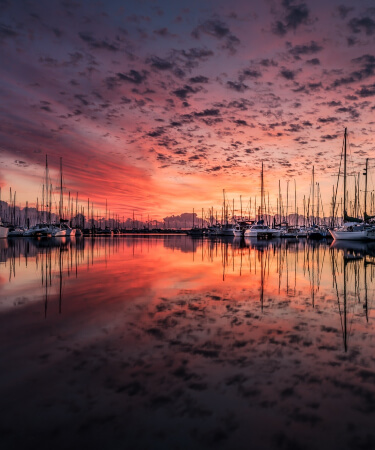Table of Contents
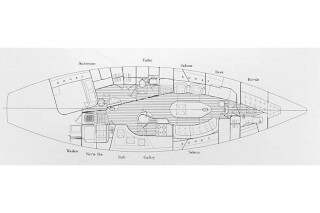
In the final part of our tour of s/v Rachel J Slocum’s interior, we conclude the downsizing process that began with 30-weeks to minimalism. When it comes to the rest of the living space aboard s/v Rachel J Slocum, we will bring the “bear minimum” aboard because we need to leave room for spares. And we have no idea where Bill has the spares stored or how much if it is there is!
That will be one of the priority tasks when we visit Ft Lauderdale again.
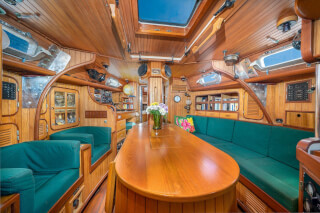
Saloon
Starting from the starboard side, this space is comprised of a long settee that can be pulled out into a double berth. Bookshelves line the starboard side of the saloon and as well as the starboard side of the owner’s cabin. As far as books, we will bring along sailing, cooking, writing, philosophy and climbing. Works of fiction will be stored in a Kindle.
At center, the Lugger engine is concealed under the table, which can slide away allowing 360 degree access.
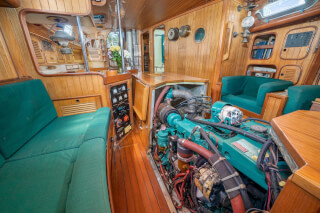
On the port side, the saloon features a recessed liquor cabinet and wine storage between the two club chairs,
Throughout, many of the hatches allow easy access to the electrical wiring which Bill designed and installed himself during this vessel’s construction, which occurred over 3 1/2 years in southern Taiwan.
Desk / Main Nav Station
The desk is located forward of the club chairs on the port side. It includes a variety of instrumentation, while the remainder is located at the nav station which is adjacent to the companion way on the starboard side.
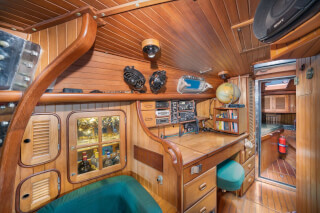
Other cruisers have shared ways to stay in touch, including:
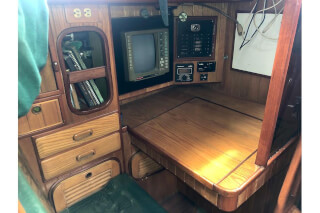
We will also be bringing computer and electronics to serve a few purposes:
- back-up navigational tools (iPad with waterproof case)
- storing sailing log/maintenance records/living expenses
- generating website content
- VOIP communication
There is a tall, vertical nook next to the nav station where all the nautical charts were stored. We might repurpose this living space by creating pull-out, sliding shelves.
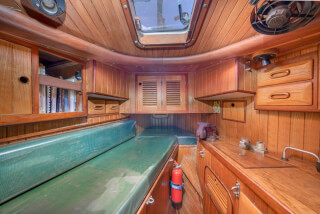
V-berth
The fore cabin doubles as a workshop and sleeping area/stowage. In the brief visit we had opening drawers, I was overwhelmed at how each available space was taken up with spares, spares and more spares. The Voyager’s Handbook suggests leaving 1/4 to 1/3 of stowage for spares. We aren’t taking much because everything else is for the boat, to maintain her operations and keep us safe.
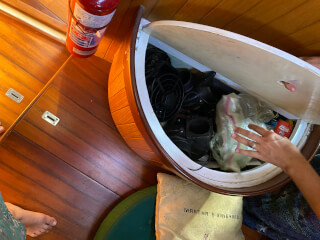
Everyday Tools
We captured some of the advice from youtube channel sail followtheboat, who provided the top 10+ everyday tools needed aboard a sailboat. These include:
- Socket set (imperial and metric)
- Marlin spike
- Screwdrivers (flat and Phillips, differing lengths)
- Multimeter
- Electrical kit (wire stripping, black & red tape, terminals, crimping gun)
- Torches/flashlight - 12V spotlight, work lamp (portable and rechargeable), headlamp (white and red lamp), diver’s torch
- Cable ties or zip ties
- Adjustable wrench (keep lubricated with WD40)
- Multitool
- Sailor’s knife with blunt end, serrated, rust proof, bright handled
Out Chasing Stars offers their perspective on not just which tools but how to store them in their post Tools for Cruisers.
I don’t envy Andrew’s task ahead of him, as he needs to evaluate what he brings from his tool box in comparison to what Bill already has stocked aboard RJ Slocum for specific boat use.
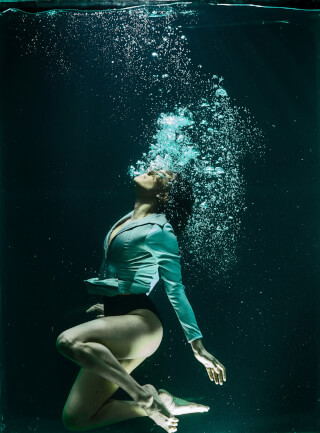
Marine life
As we choose items that we take with us, we have become acutely aware of the impact salt water, sun and humidity could have on each item.
For humidity, we will be investing in Eva Dry Wireless or Probreeze dehumidifers as suggested by Marga while she gave a tour of her boat Dogfish, a Kelly Peterson 44 on the youtube channel s/v Adventurer.
Sunbrella will be the fabric of choice for tenting our boat as well as for fabrics used for the upholstery, cushions, etc. to help minimize damage from the sun and salt water.
Corrosion is also a big factor, so we can’t be cavalier and buy just anything, we have to check for whether it is stainless steel, etc.
Finally, there is also the issue about creepy, crawlies. Living closer to nature sometimes means living closer to bugs, so we’ll need to address our habits when it provisioning food (bugs can nest in cardboard, so we will need to process/sanitize everything before it is stored on the boat), Mosquitoes love me. Andrew? Not so much. So we’ll need to figure out what sort of netting or screens exist or are required on the boat.
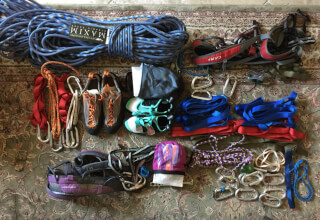
Rest of the living space
Because we are using this live-aboard home to sail around the world, we also want to make sure we are able to bring other items that contribute to living life beyond the boat. These include:
- climbing gear
- snowboard gear
- longboards
- folding bikes
- provisioning gear
- knitting supplies
- snorkeling
- fishing
- electronics - communications (headset), others
The sooner we get back to Ft Lauderdale, the sooner we can sort out the living space and develop a strategy. We’ll provide more updates, so check back here after our sea trial.
Thanks for reading!
Share Living Space with your friends:
Stay up to date with our content releases, by subscribing to our RSS Feed or follow us on Facebook and Instagram.
 If you would like to delve deeper into our adventure as it unfolds, please consider joining the Serenade Wind Crew. Our sister site provides more information on what it means to be part of the crew, unlock the pirate’s booty, and receive other exclusive access and benefits.The first 50 members have a gift waiting.
If you would like to delve deeper into our adventure as it unfolds, please consider joining the Serenade Wind Crew. Our sister site provides more information on what it means to be part of the crew, unlock the pirate’s booty, and receive other exclusive access and benefits.The first 50 members have a gift waiting. 